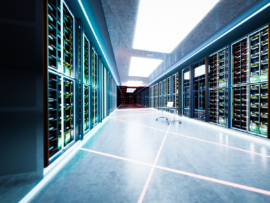
Oracle and OpenAI have announced a new agreement to expand Stargate’s U.S. data center capacity by 4.5 gigawatts, bringing the the total capacity to just over 5 gigawatts. This latest development marks a significant step toward OpenAI’s stated goal of reaching 10 gigawatts of capacity by 2029.
Stargate: What do you need to know?
Stargate aims to position the U.S. as a dominant force in global AI development. The initiative is part of a broader national push supported by President Trump, who has publicly endorsed a $500 billion target for the project by 2029, according to The Wall Street Journal.
Achieving that scale, however, requires collaboration across major technology firms and international investors, not just government support.
Getting to know the organizations behind Stargate
Although conversations surrounding Stargate began as early as 2022, the project was formally announced in January 2025. It brings together multiple stakeholders from across the tech and investment landscape:
- OpenAI: Responsible for one of the leading generative AI platforms of today, ChatGPT, OpenAI provides ongoing leadership, AI model development, and technological support to the Stargate Project.
- Oracle: While Oracle was among the list of original names mentioned regarding the Stargate projects, its latest agreement with OpenAI represents a huge step in realizing the final goal of Stargate as a whole.
- SoftBank: Another one of the original companies mentioned in the announcement of Stargate, SoftBank is responsible for managing investments and funding on behalf of the initiative; both OpenAI and SoftBank have pledged $19 billion to support the development of Stargate.
- Crusoe: This Denver-based startup is tasked with leading the construction and buildout for Stargate data centers.
- MGX: An AI investment firm based in the UAE, MGX has contributed approximately $7 billion to the Stargate Project thus far.
OpenAI and Oracle are responsible for much of Stargate’s underlying technology, but additional tech and support is provided by the following companies:
- ARM: Also known as ARM Holdings, this is the company responsible for designing energy-efficient CPU architectures and other technology.
- Microsoft: Although not one of the initial four companies leading the project, Microsoft serves as a critical technology and cloud computing provider for the Stargate Project.
- NVIDIA: One of the biggest providers of hardware for Stargate, NVIDIA plans on deploying no less than 64,000 GPUs for the project by 2026.
Shaping the future of AI in the U.S. and abroad
“We estimate that building, developing and operating the additional 4.5 GW of data center capacity we’re announcing today will create over 100,000 jobs across construction and operations roles in the US,” blog OpenAI said in a blog post.
With billions in funding, a coalition of global tech leaders, and government alignment, the Stargate Project is emerging as one of the most ambitious AI infrastructure initiatives in U.S. history. Its scale and scope aim not only to accelerate AI adoption domestically but also to influence the global AI landscape.
Catch up on how Stargate’s billion-dollar data center buildout is reshaping U.S.–UAE tech diplomacy — read our deep dive into OpenAI’s global infrastructure push.





